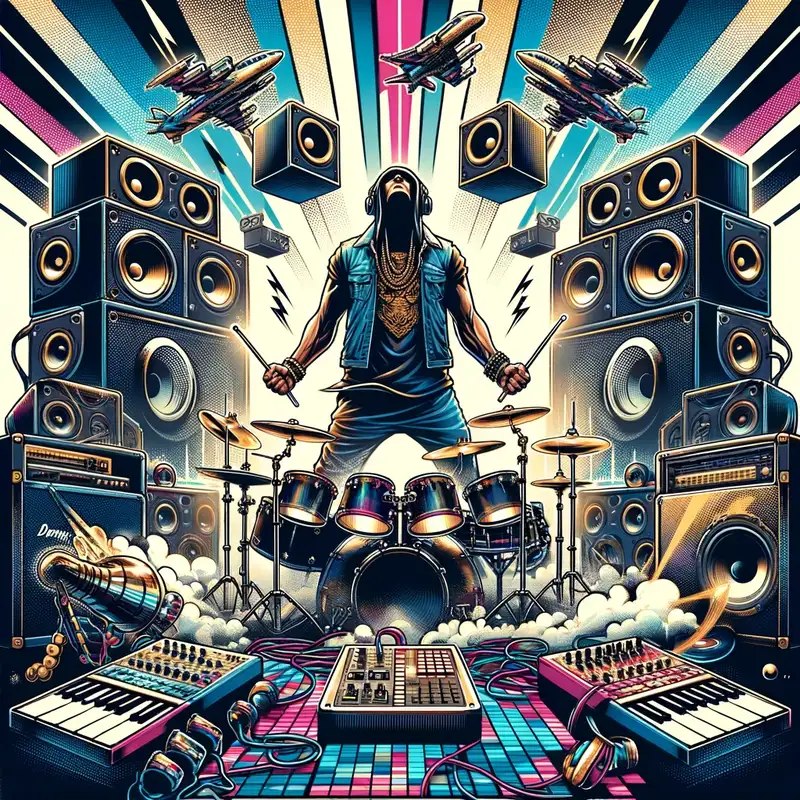Drum and Bass

With its fast breakbeats, heavy bass, and complex rhythms, Drum and Bass, or DnB as it’s commonly abbreviated, is more than just a musical style – it’s a whole mood.
Table of Contents
The Origins
Let’s kick it back to the early ‘90s in the UK, where DnB first erupted from the underground rave scene. It’s essentially a sped-up version of breakbeat, mixed with influences from techno, house, and reggae.
Big ups to early innovators like Goldie, LTJ Bukem, and Roni Size for laying down the foundation.
Anatomy of a DnB Track
A typical Drum and Bass track sits somewhere between 160 and 180 BPM, making it one of the faster electronic genres. The two main components?
- Drums: Fast breakbeats that give the music its signature pace.
- Bass: Deep, heavy, often distorted lines that give you that floor-shaking feel.
Key Players
- Andy C: Often referred to as the godfather of DnB.
- Netsky: Known for his more melodic and liquid takes on the genre.
- Noisia: These Dutch guys are wizards of the darker, techier sounds.
- Chase & Status: These folks have been monumental in bringing DnB to mainstream ears.
Subgenres
- Liquid: Smooth, melodic, often jazzy.
- Jump Up: More aggressive, focused on getting people moving.
- Neurofunk: Dark, complex, and techy.
- Jungle: The original, with heavy reggae and breakbeat influences.
DnB Hotspots
To really feel Drum and Bass, you’ve gotta be in a crowd of fans when that bass drops.
Fabric in London or the Sun and Bass festival in Sardinia. If you’re in the U.S., check out Respect in L.A.
DnB and Pop Culture
From movie soundtracks to fashion, Drum and Bass has left its mark. Remember that classic scene from “The Matrix” with the spine-tingling DnB track? Yep, that’s the impact we’re talking about.